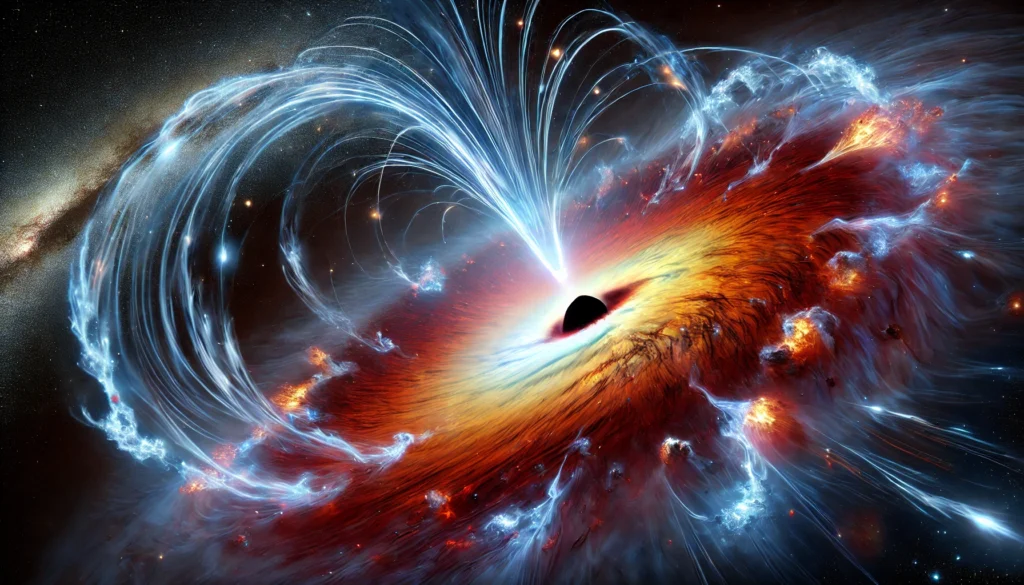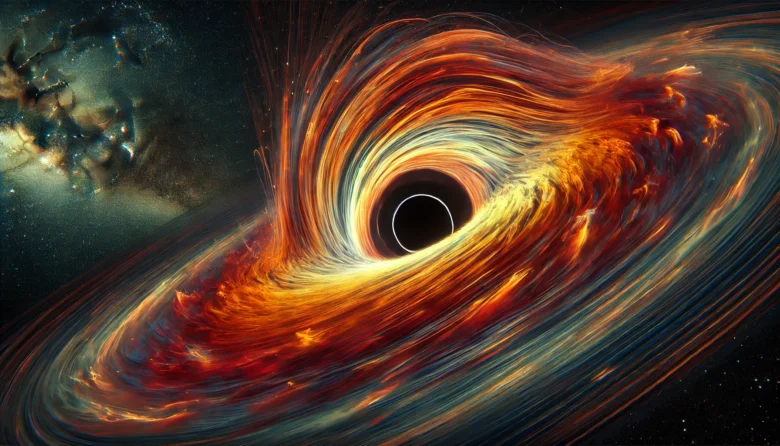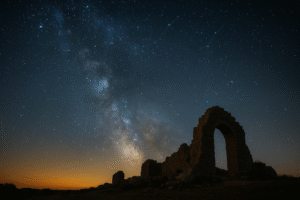When you think of black holes, you might imagine them as mysterious, all-consuming voids in space, devouring anything that comes too close. While that’s true to an extent, black holes play a much more complex and vital role in the cosmos, particularly in the formation and evolution of galaxies. In this blog, we’ll explore how these enigmatic entities influence the birth and development of galaxies, unravelling the cosmic dance that shapes our universe.
Introduction
Black holes have long fascinated scientists and the public alike. These cosmic giants, with their immense gravitational pull, are not just the universe’s vacuum cleaners—they are also fundamental to the structure and formation of galaxies. The role black holes play in the formation of galaxies is a subject that continues to fascinate astronomers. In this blog, we’ll delve into how these powerful entities contribute to the creation and evolution of galaxies. Whether you’re a seasoned space enthusiast or just curious about the universe, this journey into the heart of galaxies and black holes promises to be an intriguing ride.
What Are Black Holes?
Before diving into their role in galaxy formation, let’s quickly recap what black holes are. A black hole is an area in space where the gravitational force is so intense that nothing, not even light, can escape. This intense gravity results from a significant amount of mass being packed into a very small space. Black holes generally form when massive stars collapse under their own gravity at the end of their life cycles.
There are different types of black holes, but the ones most relevant to galaxy formation are supermassive black holes (SMBHs). These black holes, which can have masses ranging from millions to billions of times that of our Sun, are located at the centres of most galaxies, including our Milky Way.

The Birth of Galaxies and the Role of Black Holes
The relationship between black holes and galaxy formation traces back to the early history of the universe. Shortly after the Big Bang, the universe was a chaotic mix of gas and dark matter, with no stars or galaxies in sight. Over time, this matter began to clump together due to gravitational forces, eventually leading to the formation of the first stars and galaxies.
But where do black holes come into this picture? It turns out that black holes, particularly the supermassive kind, may have been instrumental in the formation of galaxies. One leading theory suggests that these black holes and their surrounding regions, known as accretion disks, provided the necessary gravitational anchor for galaxies to form. The intense gravitational pull of a supermassive black hole can attract vast amounts of gas and dust, which can then form stars and other cosmic structures around it. In this way, black holes may act as the seeds around which galaxies grow.
Case Study: The Milky Way and Sagittarius A*
Our own galaxy, the Milky Way, provides a fascinating example of the relationship between black holes and galaxy formation. At the heart of the Milky Way lies a supermassive black hole called Sagittarius A* (pronounced “Sagittarius A-star”). This black hole, with a mass of about 4 million times that of the Sun, is relatively quiet compared to some of its more active counterparts in other galaxies. However, its presence has been crucial to the structure and stability of the Milky Way.
Sagittarius A* exerts a powerful gravitational influence on the surrounding stars, helping to maintain the galactic structure. Additionally, it likely played a significant role in the Milky Way’s early development by gathering gas and dust that formed stars, shaping the galaxy into the spiral structure we see today.
Black Holes and Galactic Evolution
Black holes don’t just help form galaxies; they also play a crucial role in their evolution. One of the ways black holes influence galactic evolution is through the energy they release during what are known as active galactic nuclei (AGN) phases. During these phases, a supermassive black hole consumes large amounts of gas and dust from its surroundings. As this material spirals into the black hole, it heats up and emits enormous amounts of energy, often in the form of X-rays and other high-energy radiation.
This process can have dramatic effects on the galaxy. For example, the energy released can blow away gas and dust, halting star formation in certain regions of the galaxy. This phenomenon, known as feedback, helps regulate the growth of galaxies and can even determine their ultimate size and shape. Without this feedback from black holes, galaxies might grow unchecked, leading to much different cosmic landscapes.
The Mysterious Relationship Between Black Holes and Galaxies
While we know that black holes are central to galaxy formation and evolution, there are still many mysteries to unravel. One of the most intriguing questions is why the mass of a supermassive black hole is so closely related to the mass of the galaxy’s central bulge, a relationship known as the M-sigma relation. This correlation suggests a deep connection between black holes and their host galaxies, but the exact nature of this relationship remains one of the biggest puzzles in astrophysics.
Some theories propose that the feedback mechanisms we discussed earlier play a role in this relationship. As black holes grow by consuming gas and dust, they may regulate the growth of their host galaxies, leading to the observed correlation between black hole mass and galactic mass. However, more research is needed to understand this connection fully.
Case Study: Quasars and the Early Universe
Quasars, some of the brightest objects in the universe, offer another intriguing example of how black holes influence galaxy formation. Quasars are powered by supermassive black holes at the centres of young galaxies, and they emit extraordinary amounts of energy as they consume material from their surroundings. These objects were more common in the early universe, and studying them has given scientists insights into how galaxies and black holes co-evolved during the universe’s formative years.
One well-known quasar, 3C 273, is located in a galaxy about 2.4 billion light-years away. It’s one of the brightest quasars observed from Earth and serves as a crucial object of study for understanding the interplay between black holes and galaxies in the early universe. The light from quasars like 3C 273 allows astronomers to look back in time, offering a glimpse into the processes that shaped the early cosmos.
Conclusion
Black holes are not merely cosmic curiosities; they are essential to the formation and evolution of the universe. From acting as the seeds around which galaxies form to regulating the growth of these cosmic giants, black holes play a central role in shaping the universe as we know it. While there is still much to learn about the relationship between black holes and galaxies, one thing is clear: without black holes, the universe would be a very different place.
As we continue to explore the cosmos, the study of black holes will undoubtedly reveal even more about the nature of the universe and our place within it. So, the next time you gaze up at the stars, remember that deep within many of those distant galaxies lies a powerful black hole, silently shaping the universe in ways we are only beginning to understand.
Author’s Note:
Exploring the role of black holes in galaxy formation is like uncovering a hidden architect behind the universe’s most magnificent structures. I hope this blog has shed some light on these fascinating cosmic phenomena and inspired you to look deeper into the mysteries of the cosmos.
G.C., Ecosociosphere contributor.




